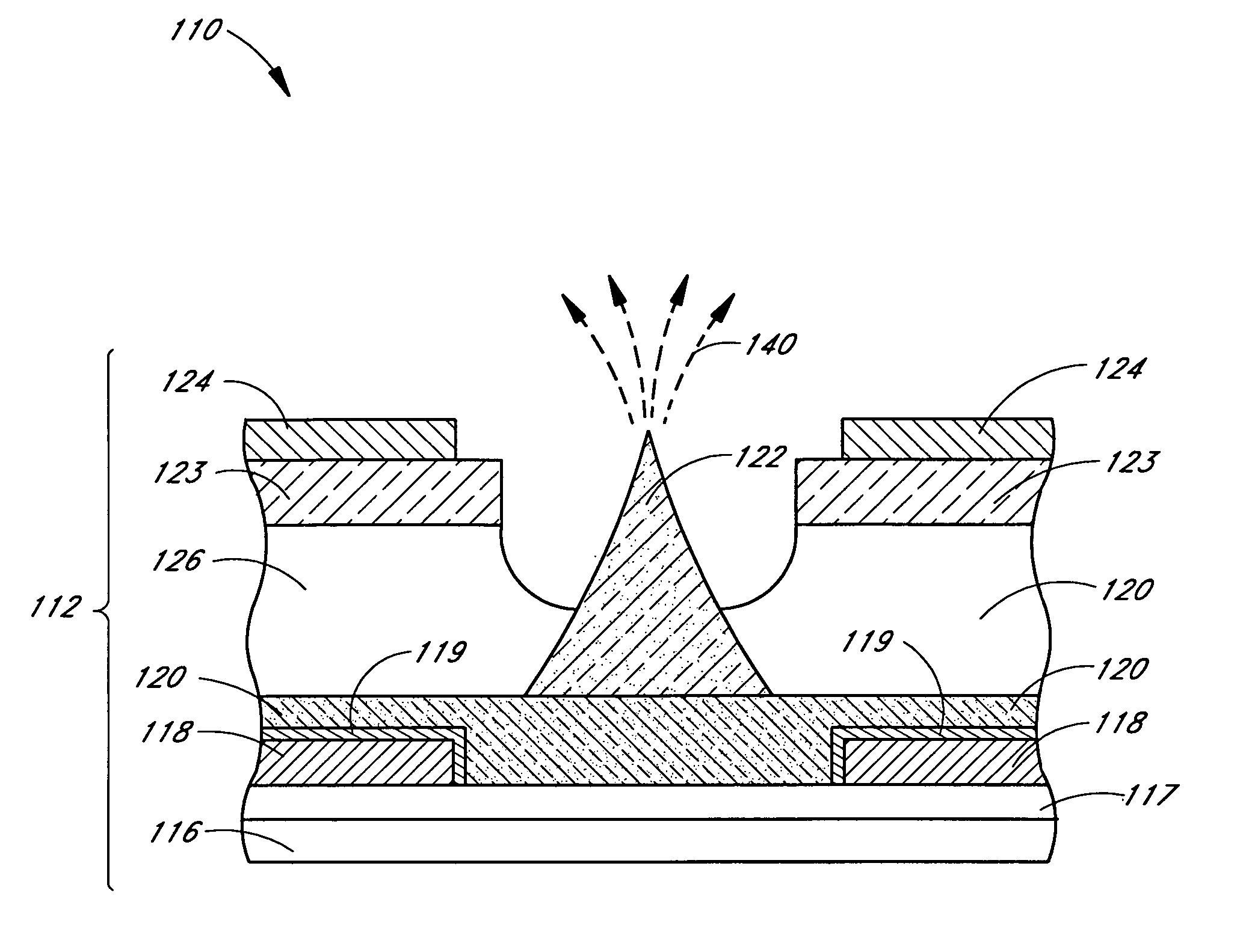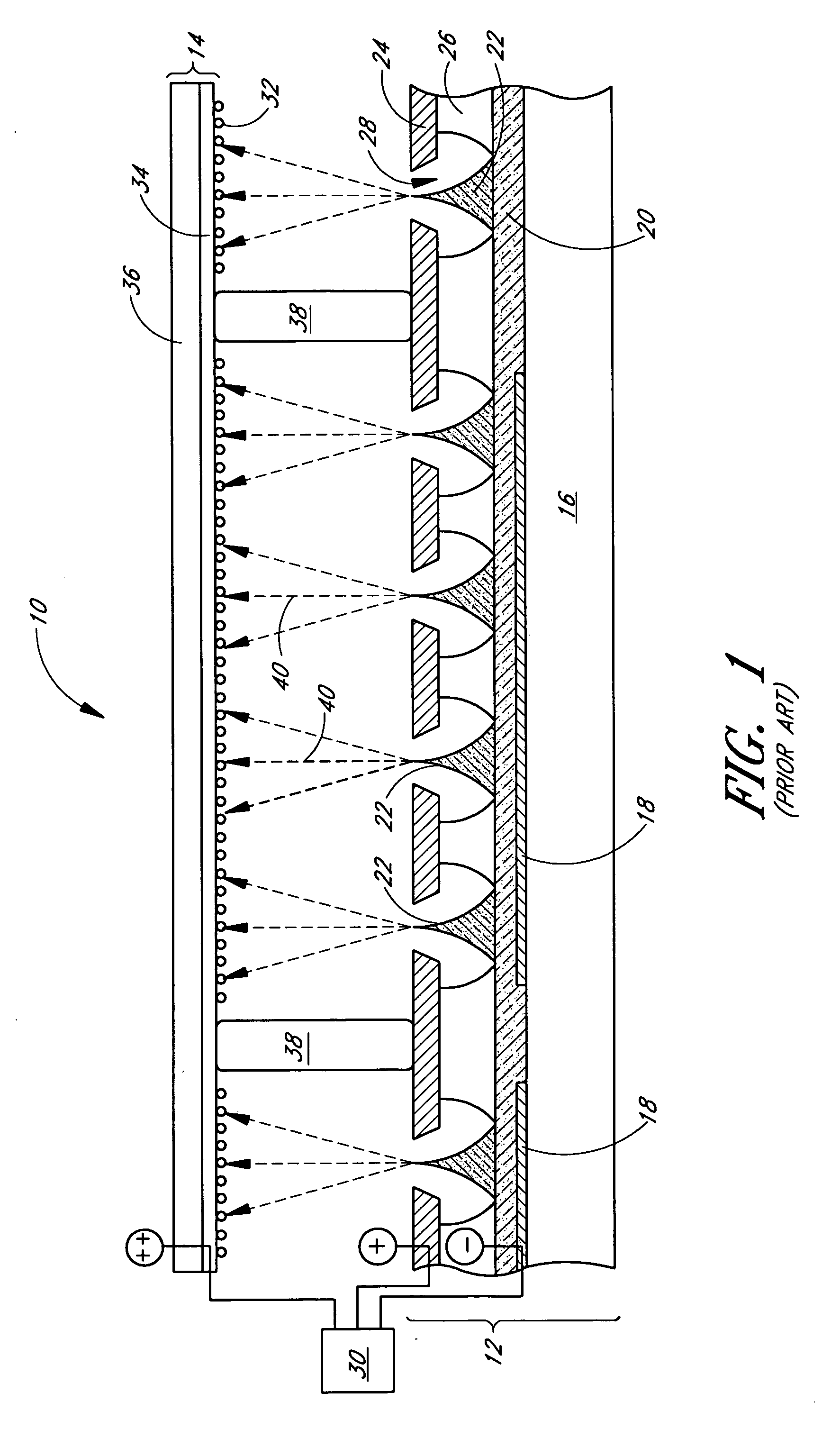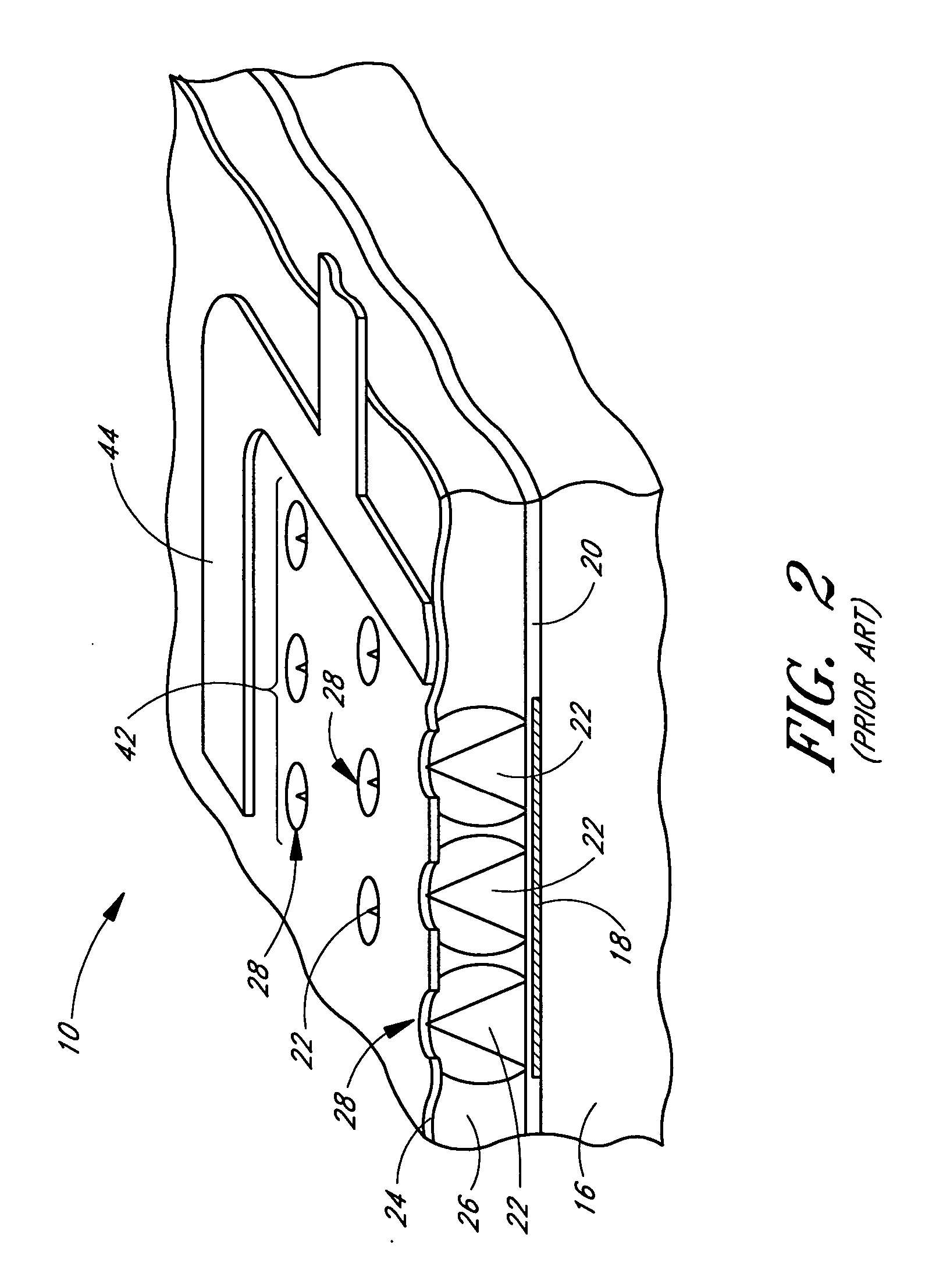Method of forming nitrogen and phosphorus doped amorphous silicon as resistor for field emission display device baseplate
a technology of resistor and amorphous silicon, which is applied in the manufacture of electrode systems, electric discharge tubes/lamps, and discharge tubes luminescnet screens, etc., can solve the problems of short circuit of the device, short circuit of the resistor layer, and nucleation related defects at the interface of the resistor and metal, so as to reduce the nucleation problem and be less mobile
- Summary
- Abstract
- Description
- Claims
- Application Information
AI Technical Summary
Benefits of technology
Problems solved by technology
Method used
Image
Examples
Embodiment Construction
[0021] The preferred embodiments are field emission display devices having a resistor that eliminates short circuiting of the device. It will be appreciated that although the preferred embodiments are described with respect to FED devices, the methods and apparatus taught herein are applicable to other devices where it is desired to eliminate short-circuiting and defect-related problems between a resistor-type layer and a metallic layer.
[0022]FIG. 1 illustrates a portion of a conventional flat panel display, including a plurality of field emission devices. Flat panel display 10 comprises a baseplate 12 and a faceplate 14. Baseplate 12 includes substrate 16, which is preferably formed from an insulative glass material. Column interconnects 18 are formed and patterned over substrate 16. The purpose and function of column interconnects 18 is disclosed in greater detail below. Furthermore, a resistor layer 20, which is also discussed in greater detail below, may be disposed over column...
PUM
| Property | Measurement | Unit |
|---|---|---|
| temperatures | aaaaa | aaaaa |
| temperatures | aaaaa | aaaaa |
| temperatures | aaaaa | aaaaa |
Abstract
Description
Claims
Application Information
 Login to View More
Login to View More - R&D
- Intellectual Property
- Life Sciences
- Materials
- Tech Scout
- Unparalleled Data Quality
- Higher Quality Content
- 60% Fewer Hallucinations
Browse by: Latest US Patents, China's latest patents, Technical Efficacy Thesaurus, Application Domain, Technology Topic, Popular Technical Reports.
© 2025 PatSnap. All rights reserved.Legal|Privacy policy|Modern Slavery Act Transparency Statement|Sitemap|About US| Contact US: help@patsnap.com



